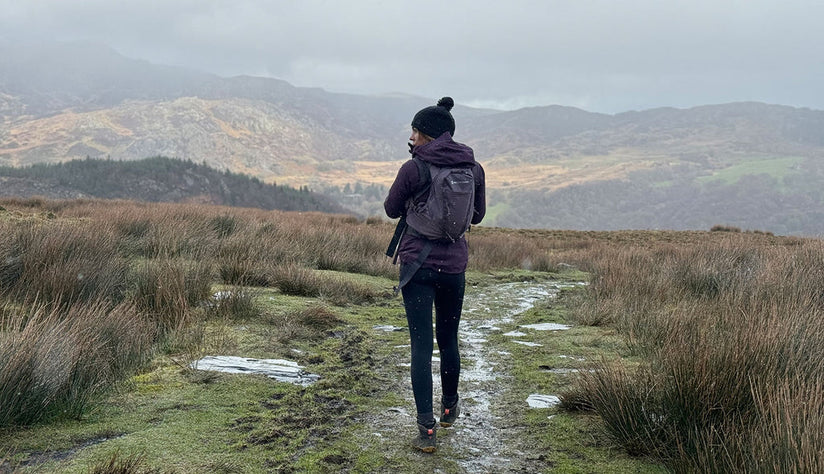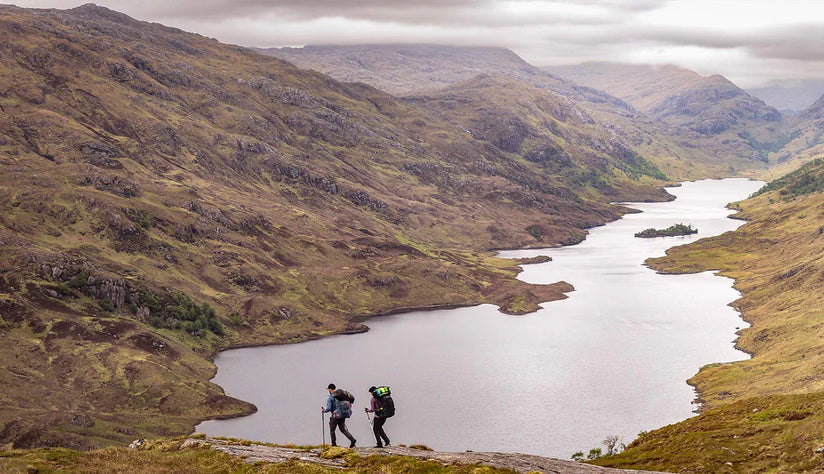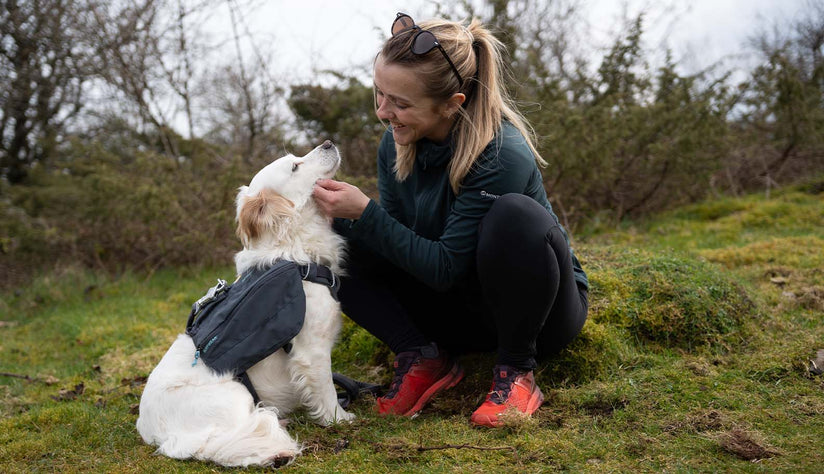Ensuring your outdoor gear is highly versatile and allows you to move fast and light, so you can experience more, is something we’re passionate about here at Montane. In fact, it's a fundamental design philosophy.
By developing lightweight kit that enables you to move efficiently, we believe you can totally transform your adventure experience, providing you with boundless freedom to explore. This concept extends to packing light, whatever activity you're undertaking. It is is more than just finding the right backpack; it’s a skill that requires some careful consideration to get right.
We caught up with Montane athlete and ultra runner Howard Dracup, who has tons of experience in perfecting his packing game. Here’s his take on how to pack light this season.
Why pack light?
For many, figuring this out can be a tedious task and this is where the versatility of the products you choose to take with you is essential! The aim of the game is to get the maximum amount of use out of the minimal amount of kit, or the least amount of weight without compromising your own safety. Ultimately you want to be able to move fast, light and unencumbered in the mountains.
So, first things first, you need to think about the materials and the properties of the garments you’re going to need. Are they warm, are they waterproof, are they windproof, how well do they compress and how much does it weigh? Is it synthetic, what happens when it gets wet, how fast does it dry? But that’s just the beginning…then of course there’s the rest of your essential gear.

Depending on what type of adventure you're going on, all of the above factors need to be taken into consideration as well as what time of year it is and what the weather forecast is looking like before starting to pack.
Checking the weather forecast
One big factor that affects what you need to pack is the weather, so it’s essential you check this before setting off! I use a combination of 3 different sources: Mountain forecast, Met office and MWIS. If there’s even an inclination on any of the apps that the weather might be cold, wet or windy, I’ll always assume the worst and pack accordingly (even if the other 2 apps don’t predict the same!) Personally, I’d rather go slightly over-equipped and play it safe than get caught out.
Should the weather look like it might be scorching I would recommend some additional packing essentials which includes an extra application of sun cream or a hat/visor and some lighter kit. This is why it is always best to start your adventure planning by looking at the weather.
After I know what the weather’s going to be like and also taking into consideration what time of year it is, I can then start making my kit and gear choices. I start with what I’m going to wear which is usually always a combo of waterproofs, insulation, base layers, hats and gloves.
Day missions
Let's assume I’m going running for 20 miles in the mountains in the warmer months. The weather’s going to be 18 degrees with no wind and not a cloud in the sky. For my waterproofs, I will take my Phase Nano Waterproof Jacket and pants. I love these because they are so light and pack down to nothing but will cover me if the weather turns. I will wear my SlipStream Twin Skin Running Shorts, and Dart Nano Base Layer, as well as my trucker cap to keep the sun out of my eyes.
I'll then carry all my kit in a Gecko VP+. They are just about the right size to get everything in, plus they have an emergency whistle on one of the zippers (all the gecko VP packs have these). I always start with an empty dry sack and for this I like to use the Montane 6L dry bags. I pack my dry sack in order of what I hope to use the least at the bottom so, at the bottom, I’ll put my emergency bivy - I use a Sol bag.

Then I'll put in my emergency hat and gloves. As it’s summer, I’d use a via stretch beanie and power dry gloves to keep my bag nice and light. I'll also pack a spare emergency baselayer too, like a dart long sleeve top. Even though it's 18 degrees, it will be cooler high up and if you have an accident like roll an ankle and have to hobble back to the car or, even worse have to be rescued, you’ll soon get cold pretty fast. This is why I carry the spare hat and gloves, as well as a baselayer and an emergency bivy. If you are still cold then you can then also put on the waterproof jacket and pants too!
Other equipment I’ll be carrying will be: 2x 500ml soft flasks, GPS watch with the route downloaded, map, compass, a small head torch (I use a LED lenser Neo 6r), fully charged mobile phone, travel size suncream and a water filter. I love the katadyn be-free filters, which are 0.6L. I carry the flask empty and when I need to top up my other empty 500ml bottles I put the water through the filter and squish it into the 500ml flasks. If I'm high enough I won’t bother with the filter though. Last, but not least, I make sure to pack some energy bars for when I get hungry (keep reading for more on that!)
Into the dry sack I'll also add the head torch, mobile phone, map and compass, alongside waterproof pants and lastly the waterproof jacket. In my opinion this is the item I'm most likely to need out of all that lot, so if I have to stop and dip into the dry bag, I don’t have to pull everything out; these are the items I’ll only really need in an emergency!
Finally, I squish all the air out of the sack and really press down on the contents to compress it all and then roll over the top to seal it. This should now be a small, vacuum packed, malleable object that fits nicely into the back of the gecko pack. The rest of my stuff like food, water and sunscreen I'll keep in the outer pockets of the pack for easy access whilst on the move.
Multi-day adventures
You can still pack light for lengthier missions! There are just a few extra things to think about when you factor in your overnight stops - including your sleep and cooking systems. I’d take a combination of all the above clothing stated already, plus some spare leggings to change into for the night. I might even swap my Prism Ultra to a Fireball Jacket, depending on the conditions and time of year.

To make sure I have enough room for the extra items I’ll need, a bigger pack like the Trailblazer LT 20 backpack is essential. I’d choose this pack because it’s waterproof, extremely light and comfy. In short, it’s a great size for fast and light adventures.
In addition to all the essentials I’d take for a day trip, I'd also bring a backup head torch with spare batteries for both torches. Other essentials I’d need include a rollup inflating sleep mat, sleeping bag, bivy (or tarp or tent depending on time of year and what experience you want), spork (a spoon and fork combined), trekking poles and a jet-boil. If you were going away for quite a few days you might also want to carry a lightweight power bank and your phone charging lead.
I personally prefer to bivy out under the stars which avoids the need for a tent. I would only take a tent if it’s winter or raining as I like to keep my pack ultra light and minimalist. Again, I’d pack all of that so my sleep system and shelter is at the bottom for the end of the day and keep the things I might use more frequently through the day like meals and my stove at the top of the pack.
You also need to make sure that you have some dry clothes to change into at the end of the day and to sleep in, so I’ll always have some leggings, a baselayer and a hat for the night put to one side. This forms part of my dynamic layering system which is usually topped off by a Fireball Jacket - helping to keep me cosy at night!
Keeping fuelled on the move
Whether on a shorter adventure or a multi day fastpack, I always make sure to pack some food to help keep me fuelled. On day trips flapjacks, protein bars or chocolate bars are my usual go-tos.
For longer trips, you need to factor in meals and for this I’ll usually take a couple of freeze dried packs to save on space. My favourite at the minute is the Summit to Eat Mac and Cheese! I have been known to eat just plain, freeze dried egg noodles for a few days when simplicity is the only option and I don’t have the room or want the extra weight of what I’d call “high maintenance food” in my pack!

Top tip
A little tip I was told a long time ago was to not get in your sleeping bag cold, otherwise, you’ll stay cold! You need to get into it warm and then zip yourself in for the night ready to sleep. By doing this, the heat coming off you warms up the cavity of air trapped in the bag with you, keeping you warm. This is what I’ve always done and it's worked a treat. Also if you have any slightly damp stuff, like base layers, you can put them in the bag with you and normally, they are dry again by the morning.














